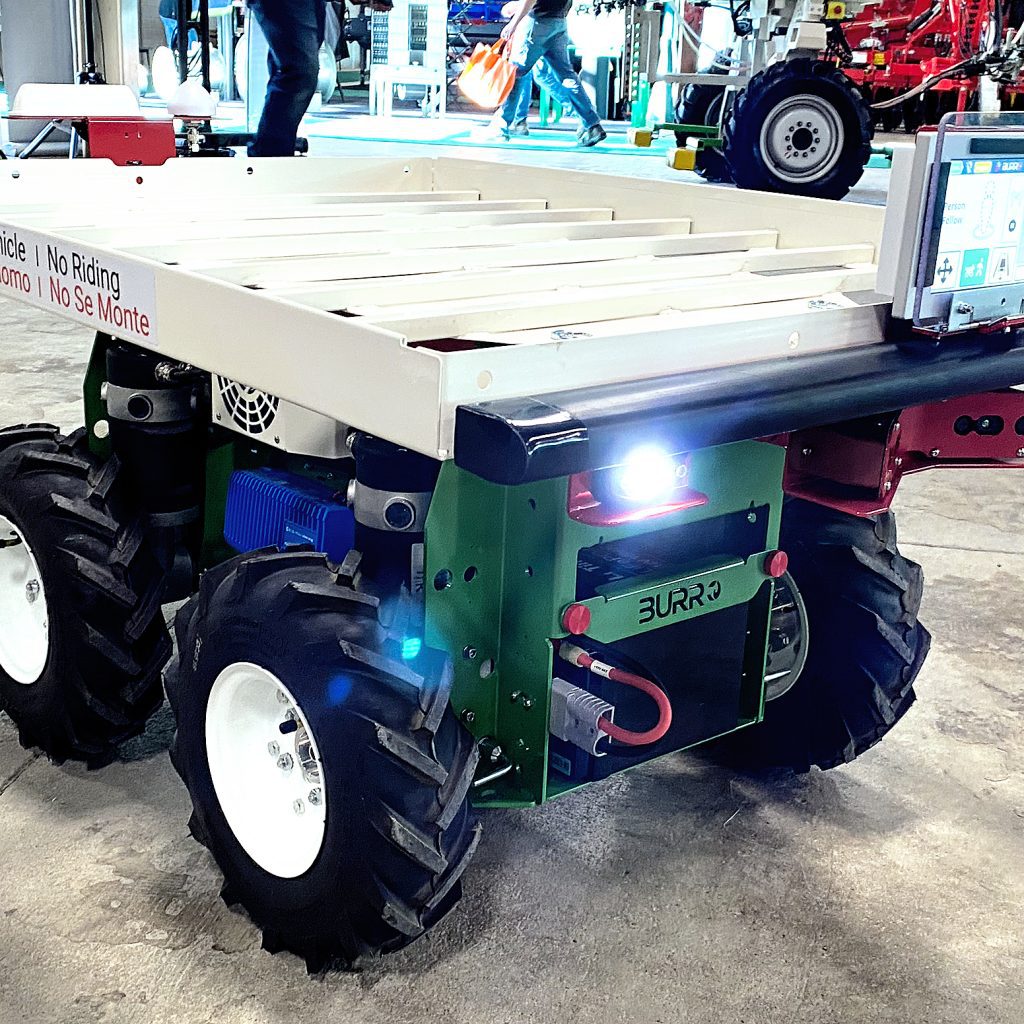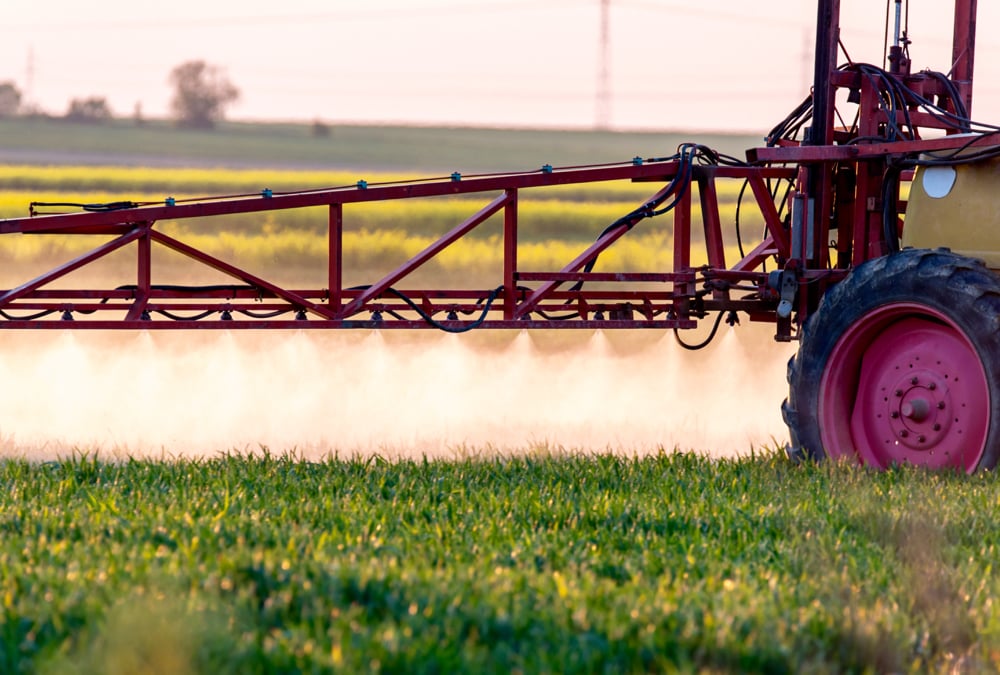Diminutive Burro packs a big AI robotic punch

“We have not used it in its operational environment yet, but we’re excited to this year, and there’s a lot of interest in it,” said Haggerty AgRobotics project manager Jason Gharibo.
Read Also

New awareness campaign asks Ontario growers to ‘Be Drift Aware’
As Ontario growers head to the fields this spring, they have easy access to new stewardship resources, no matter what…
Why it matters: Farmers are looking for ways to reduce labour and make small jobs more efficient.
“It’s a very versatile platform,” said Kurtis Eisler, Haggerty product partnership manager. “Whether you want to move seed, feed, hay bales, or tow your lawn mower (attachment), it’s very capable.”
The Burro is built to work alongside farm workers or autonomously within berry, table grape, greenhouse, nursery, citrus, and stone fruit harvest operations. It provides towing and carrying capacity between 2,500 and 5,000 pounds, or 500 up to 1,500 lb., and a range of 12 to 24 kilometres, depending on model.
The original Burro is 139 cm x 92.1 cm/ 72.3 cm, weighs 146 kg and uses four right-angled gear motors designed to negotiate rugged conditions. A removable top tray holds stacked bins in place during transport.
The touchscreen control interface is available in multiple languages, allows preprogramming for several users and has multi-sensor technology like a camera, Lidar, and RTK-GPS.
Eisler said the machine works on a pre-plotted route or follows humans, with plug-and-play collaboration between multiple Burros.
The horsepower ranges from 5.2 to 11.4, which means the Burro can keep pace no matter how fast he runs, Eisler joked.
The unit has been tested in California, and at a $23,000 price point, it’s shown value for money, Gharibo said. He hopes producers find increased value within Ontario’s horticulture sector.
He said a Burro on a plotted course with a timing rate could free up workers to pick asparagus instead of carrying heavy baskets to storage. That adds efficiency and lowers health risks for employees.
The Burro website said one machine could replace one operator and a trailer-towing tractor or replace up to two employees daily, allowing an eight-person crew to harvest 15 to 30 per cent more fruit, for example.
“What makes a lot of this possible is our collaborators’ very strong interest in moving (Ontario agriculture) forward,” said Gharibo.
Haggerty has robotic platforms for several agriculture sectors. It collaborates with producers to customize robots, find tools or integrate existing implements to provide a package that reduces labour and costs.
Efficiency in vineyards
Gharibo said the TED, demonstrated in a few vineyards last year, will be fully operational this season.
“(Last year) we proved that it can drive around the vineyard, staying around the vines and behaving how we wanted it to,” he said. “But this year, we’ll have it in its operational environment doing what it’s intended to do, which is carrying around various tools and controlling implements, whether it’s training vines or cleaning the weeds around the vines and mowing in between the rows.”
Haggerty AgRobotics worked with a Niagara region vineyard that advised on which tools would best serve the industry and work for their operation.
“TED is one of the robots we get the most inquiries about. There seems to be a lot of interest in alleviating the demand for labour in vineyards,” Gharibo said. “It’s going to be a very important tool for that.”
Early adopters are leading the charge, but he suspects more vineyards will invest in AI robotics as labour and environmental forces push in that direction.
In previous years, Haggerty only offered a contract lease model for robotics but now provides lease and purchase options.
“What we’re in the business of is helping with the adoption of these technologies,” Gharibo said. “Offering the options helps alleviate the risk if a farmer wants to try it for a season and then decide.”
The lease price could be used against the purchase price at the end of the season, which provides a low-risk trial and often makes the decision easier.
That is what Mark Richards, a Dresden area farmer, did after trying the Robotti, a diesel-powered three-point hitch autonomous machine equivalent to a 70-horsepower tractor power unit. He used it as a planter.
“We wanted to see what other implements we could use,” Gharibo told Farmtario. “The same farmer that did the planting put two strip-till units on it and did some of that.”
The field test wasn’t massive, but it allowed Haggerty Ag Robotics to test the concept and refine the machine’s parameters depending on soil conditions.
The trials convinced Richards to buy the unit, and he said at approximately $300,000, it’s still at the low end of what tractors cost.
Haggerty’s client research includes farmer surveys to assess their stage of life, operation goals, challenges and how AI robotics can alleviate those challenges, whether related to labour shortages, health or expansion.
Gharibo said the Robotti provides labour savings, consistency and repeatability.
“I’m hopeful that a lot of these robots can alleviate some of those challenges in farming and potentially increase quality of life for farmers too.”
Source: Farmtario.com

